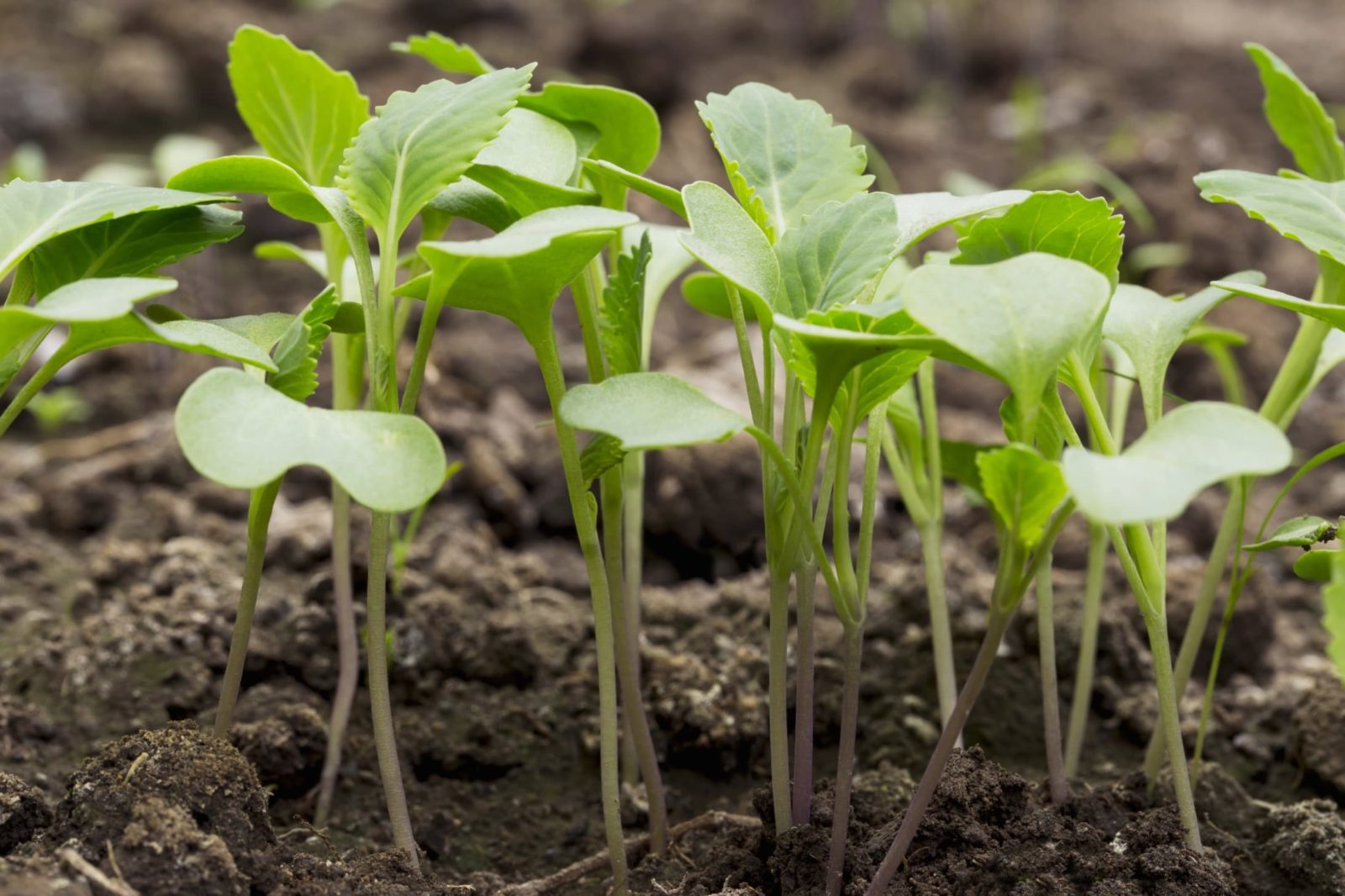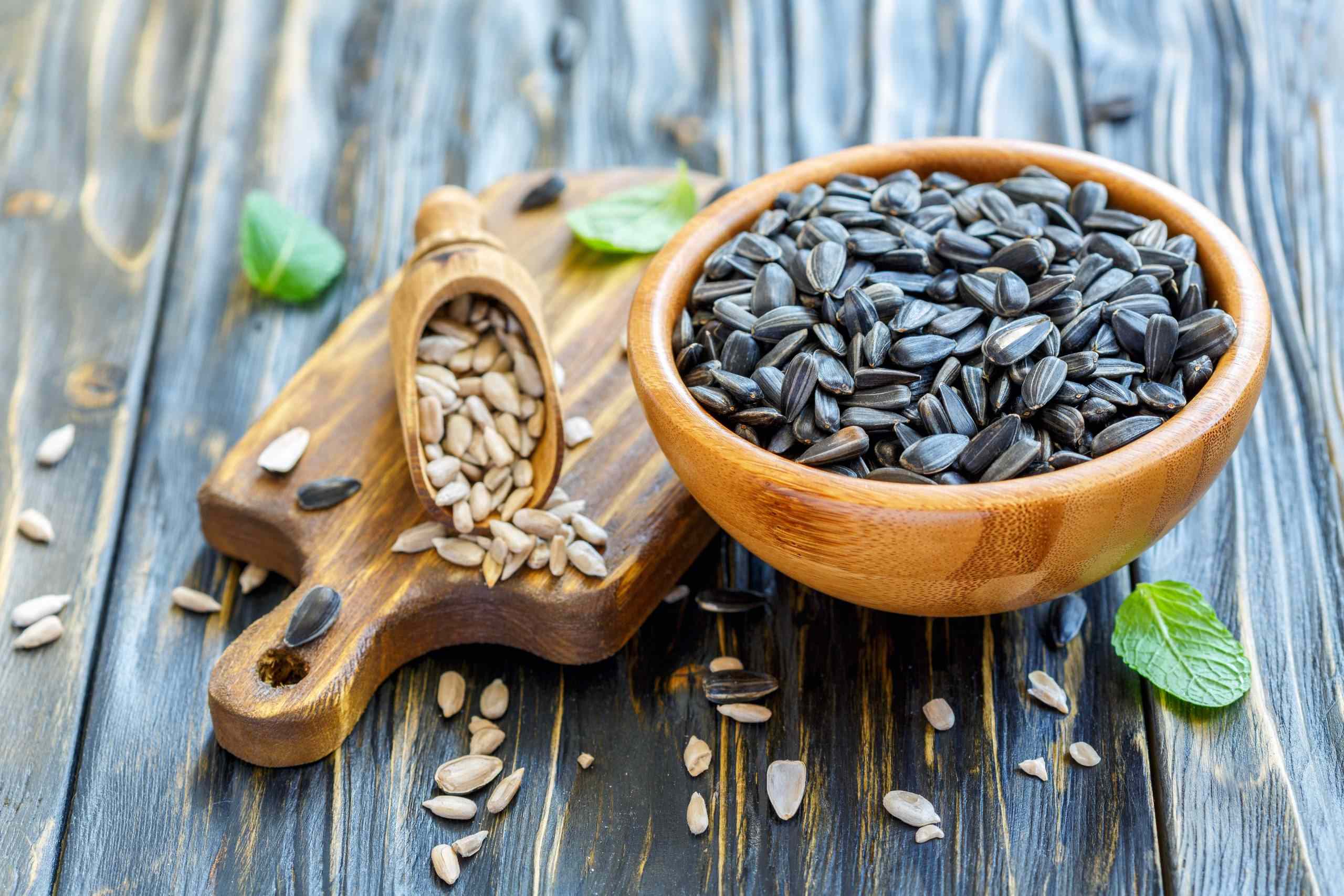Home>Types of Gardening>Ornamental Gardening>How Deep To Plant Sunflower Seeds


Ornamental Gardening
How Deep To Plant Sunflower Seeds
Modified: February 6, 2024
Learn the secrets of ornamental gardening with our detailed guide on planting sunflowers. Discover how deep to plant sunflower seeds for optimal growth and beauty.
(Many of the links in this article redirect to a specific reviewed product. Your purchase of these products through affiliate links helps to generate commission for Chicagolandgardening.com, at no extra cost. Learn more)
Table of Contents
Introduction
Ornamental gardening is a delightful hobby that allows you to create visually stunning landscapes and take pleasure in the beauty of nature. One plant that can truly elevate the aesthetics of any garden is the sunflower. With its vibrant yellow petals and towering height, sunflowers are a symbol of joy and positivity.
However, planting and growing sunflowers requires some knowledge and careful consideration. One crucial factor that affects the success of sunflower growth is the depth at which they are planted. Planting sunflowers at the appropriate depth can significantly impact their development and overall health.
In this article, we will explore the importance of planting sunflowers at the right depth and provide you with valuable tips on how to achieve this. By understanding the significance of proper planting depth and applying the recommended techniques, you can ensure that your sunflowers thrive and bring endless charm to your garden.
So, if you’re ready to take your ornamental gardening skills to the next level and grow stunning sunflowers, let’s dive into the world of planting depth and set the foundation for success!
Factors to Consider Before Planting Sunflowers
Before you start planting sunflowers, it’s important to consider a few factors that can greatly influence their growth and development. By taking these factors into account, you can ensure that your sunflowers have everything they need to thrive. Let’s explore these factors in detail:
- Soil Quality: Sunflowers prefer well-draining soil rich in organic matter. Before planting, assess the soil in your garden and make any necessary amendments to improve its quality. Adding compost or well-rotted manure can help enhance the soil’s structure and provide essential nutrients for your sunflowers.
- Location: Sunflowers require full sun to flourish. Choose a location in your garden that receives at least 6-8 hours of direct sunlight each day. Avoid planting them in shaded areas or near tall trees that may cast shadows over your sunflowers.
- Spacing: Sunflowers are known for their towering height, so it’s crucial to give them enough space to grow without crowding each other. Plan the spacing between each sunflower plant, keeping in mind their mature size. This not only allows adequate air circulation but also prevents competition for nutrients and sunlight.
- Watering: Sunflowers have moderate water needs, requiring around 1 inch of water per week. Consider the rainfall patterns in your area and supplement with regular watering when necessary. Ensure that the soil is evenly moist, but not waterlogged, as excessive moisture can lead to root rot.
- Pest and Disease Control: Before planting, familiarize yourself with common pests and diseases that can affect sunflowers in your region. Implement preventive measures such as proper sanitation, regular inspection, and the use of organic pest control methods to protect your sunflowers from potential damage.
By carefully considering these factors and addressing any potential issues, you can create a favorable environment for your sunflowers to thrive. Now that we have covered these important considerations, let’s dive into the recommended planting depth for sunflowers and its significance in their growth process.
Ideal Planting Depth for Sunflowers
The planting depth for sunflowers plays a vital role in their successful growth and development. It is essential to understand the ideal depth for planting sunflower seeds to provide them with the optimal conditions for germination and establishment. Let’s explore the recommended planting depth for sunflowers:
The general guideline for planting sunflower seeds is to plant them at a depth of 1 to 1.5 inches (2.5 to 3.8 centimeters). This depth allows the seeds to be covered with enough soil, ensuring proper moisture retention and protection from birds or other seed predators.
However, it’s important to note that the specific planting depth may vary depending on the size and variety of sunflowers you are planting. Smaller varieties of sunflowers may require a shallower planting depth, while larger varieties may need to be planted slightly deeper.
Another factor influencing the planting depth is the soil type. If you have heavy or clay soil, it’s recommended to plant sunflower seeds slightly shallower to promote better drainage. Conversely, if you have sandy soil that tends to dry out quickly, planting the seeds slightly deeper can help retain moisture.
Keep in mind that sunflower seeds are relatively large, and planting them too deep may hinder germination. On the other hand, planting them too shallow can expose the seeds to drying out or being consumed by birds, impacting their chances of successful sprouting.
By adhering to the general guideline of 1 to 1.5 inches (2.5 to 3.8 centimeters) and considering the specific factors such as sunflower size and soil type, you can achieve the ideal planting depth for your sunflowers and set them up for healthy growth and vibrant blooms.
Now that we understand the significance of planting sunflowers at the right depth, let’s explore the reasons why it is essential for their overall health and development.
Importance of Planting Sunflowers at the Right Depth
Planting sunflowers at the correct depth is crucial for their overall health and development. The depth at which sunflower seeds are planted directly impacts their germination, root establishment, and subsequent growth. Let’s delve into the importance of planting sunflowers at the right depth:
Optimal Moisture Absorption: Planting sunflower seeds at the recommended depth ensures that they are adequately covered with soil. This helps retain moisture around the seeds, preventing them from drying out too quickly. Adequate moisture absorption during the germination stage is vital for seed sprouting and early root development.
Protection from Predators: Planting sunflowers at the right depth provides a protective layer of soil, helping shield the seeds from being consumed by birds, squirrels, or other seed predators. By burying the seeds at the appropriate depth, you reduce the chances of losing your sunflower seeds to hungry wildlife.
Healthy Root Development: The planting depth influences the development of sunflower roots. By planting the seeds at the recommended depth, you encourage the roots to grow downwards, establishing a strong and extensive root system that can support the tall stalk and large flowers that sunflowers are known for.
Stability and Wind Resistance: Sunflowers with a strong root system that has properly established in the soil are better equipped to withstand strong winds or storms. Planting sunflowers at the right depth ensures a stable base, reducing the risk of them toppling over due to wind or adverse weather conditions.
Nutrient Accessibility: When sunflowers are planted at the appropriate depth, their roots have access to a sufficient supply of nutrients in the soil. This enables the plants to uptake essential nutrients, promoting healthy growth, and vibrant blooms.
By understanding the importance of planting sunflowers at the correct depth, you can provide the optimal conditions for successful germination, root establishment, and overall plant development. The next section will provide you with some valuable tips on how to achieve the right planting depth for your sunflowers.
Tips for Achieving the Correct Planting Depth for Sunflowers
Planting sunflowers at the correct depth is essential for their growth and overall health. Here are some valuable tips to help you achieve the right planting depth for your sunflowers:
1. Follow seed packet instructions: Read the instructions provided on the seed packet for specific guidance on planting depth. Different sunflower varieties may have slightly different recommendations, so it’s important to follow the instructions provided by the seed supplier.
2. Measure planting depth: Use a ruler or measuring tape to ensure accurate planting depth. Place the seed on the soil, mark the desired depth on the planting tool, and use it as a guide when planting each seed. This will help you maintain consistency in the planting depth across your sunflower bed.
3. Adjust for soil type: Take into account the texture and drainage properties of your soil. If you have heavy or clay soil, consider planting the seeds slightly shallower to promote better drainage. Alternatively, if you have sandy soil that drains quickly, planting the seeds slightly deeper can help retain moisture around the seeds.
4. Select the right sunflower size: Different sunflower varieties come in various sizes. Larger varieties may require a slightly deeper planting depth, while smaller varieties may be planted slightly shallower. Consider the mature size of the sunflower variety you are planting and adjust the planting depth accordingly.
5. Space the seeds properly: Proper spacing between sunflower seeds is important for healthy growth. Follow the recommended spacing guidelines for the specific sunflower variety you are planting. This not only ensures proper air circulation but also prevents overcrowding and competition for nutrients and sunlight.
6. Monitor moisture levels: After planting, keep a close eye on the moisture levels in the soil. Water the sunflower bed appropriately to maintain consistent moisture as per the specific needs of sunflowers. Avoid overwatering, as it can lead to rot, but ensure the soil remains evenly moist to support germination and root establishment.
7. Protect the seeds: Shield the planted seeds from birds and pests by using bird netting or covering the planting area with a thin layer of mulch. This will help prevent seed predation and give the seeds a better chance of germination and growth.
By following these tips, you can ensure that your sunflowers are planted at the correct depth, providing them with optimal conditions for germination, root establishment, and healthy growth. Now, armed with this knowledge, you can confidently embark on your sunflower planting journey!
Conclusion
Planting sunflowers at the right depth is a key factor in ensuring their successful growth and development. By considering the factors that influence sunflower growth, such as soil quality, location, spacing, watering, and pest control, you can create an ideal environment for them to thrive. The recommended planting depth for sunflowers, generally around 1 to 1.5 inches, allows for optimal moisture absorption, protects the seeds from predators, promotes healthy root development, and enhances stability in windy conditions.
To achieve the correct planting depth, it is important to follow the instructions provided on the seed packet, measure the depth accurately, and make adjustments based on soil type and sunflower size. Proper spacing, monitoring moisture levels, and protecting the seeds from birds and pests are also essential for successful sunflower growth.
By planting sunflowers at the appropriate depth and providing them with the optimal conditions for germination and growth, you can enjoy the beauty of their vibrant blooms and towering stalks in your garden. Sunflowers not only add visual appeal but also contribute to the overall positivity and joy in your ornamental gardening endeavors.
So, roll up your sleeves, gather your sunflower seeds, and put these tips into action. Embrace the art of sunflower gardening, and let these magnificent flowers bring sunshine and delight to your garden!










